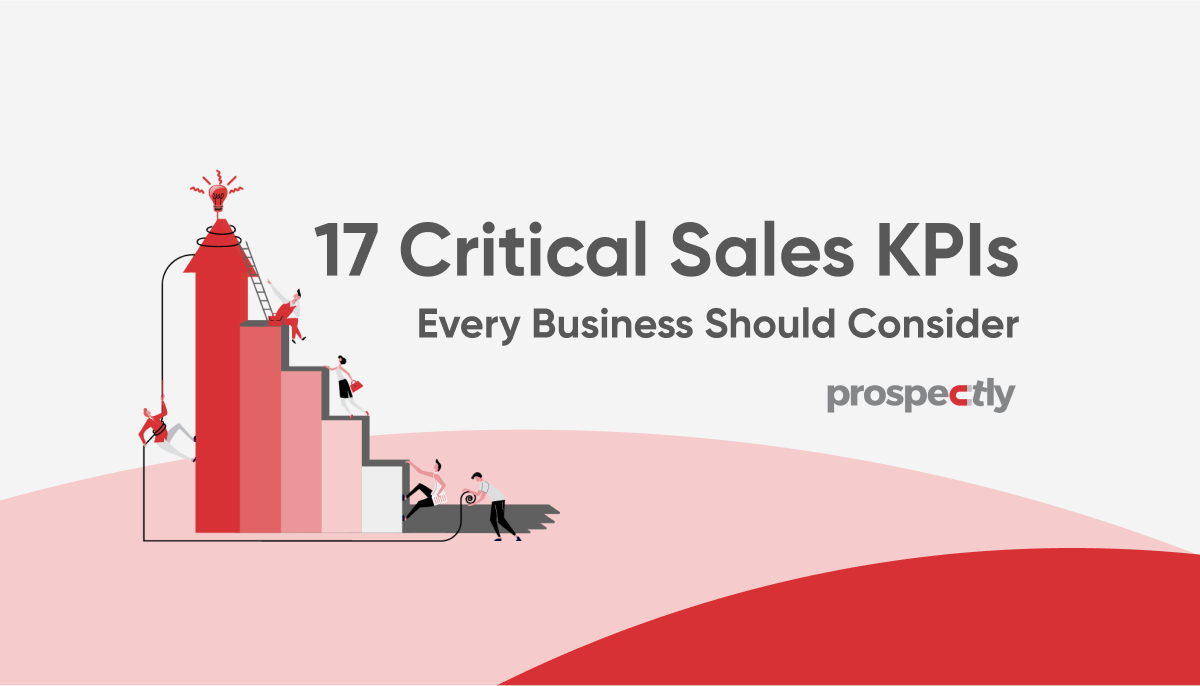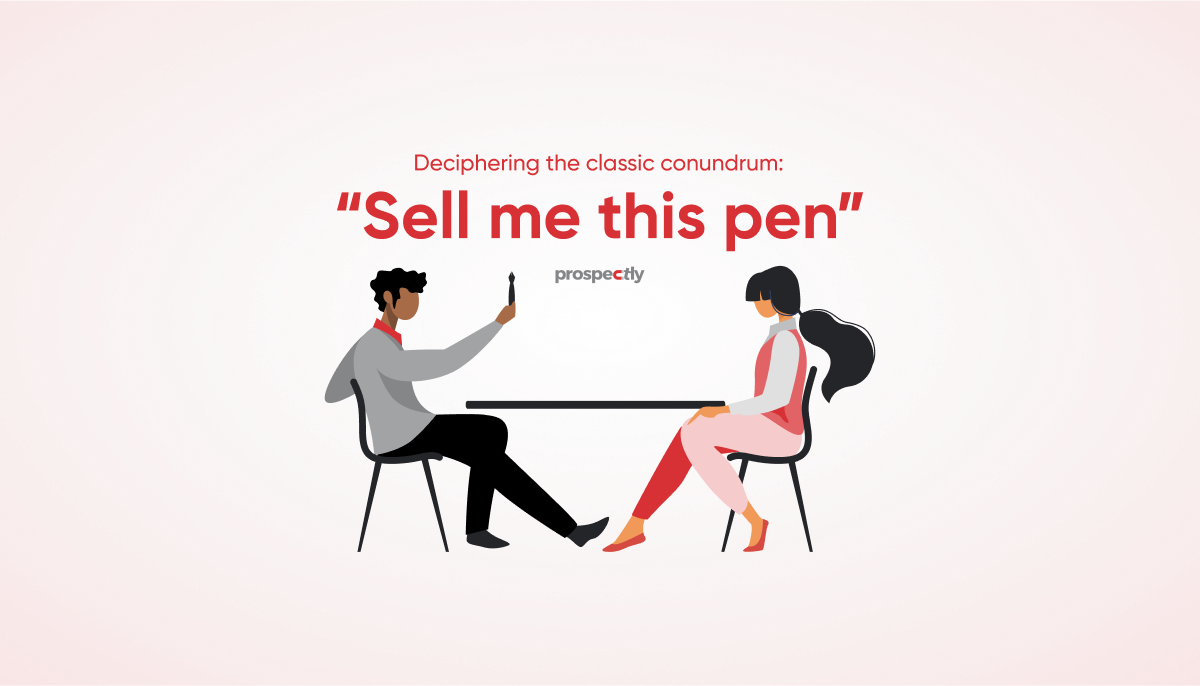How-to guide: Solution-selling essentials for beginners
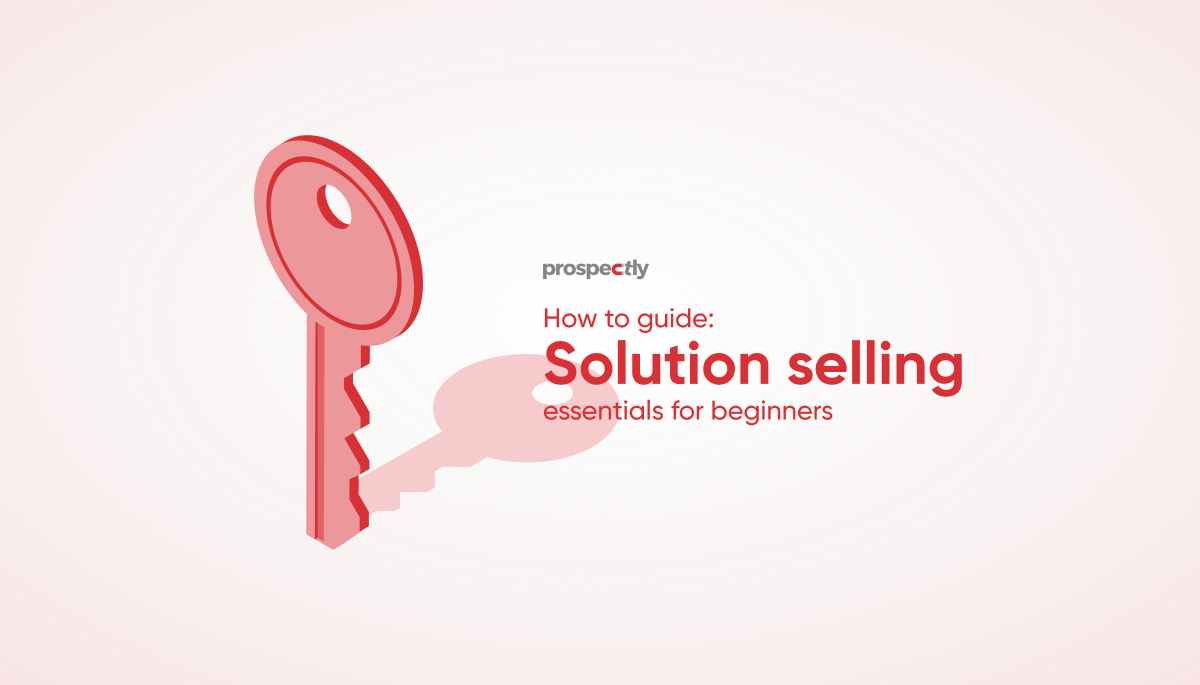
Selling your ideas and products to customers has never been easier. With the rise of Digital Transformation, it’s harder than ever for e-commerce businesses to compete.
But what if you cut through the noise, and make your product unique?
Today, you’ll dig deeper into one of the most critical sales skills – Solution Selling. Every business owner and sales rep requires this technique, regardless of whether they’re selling a new idea or an established brand.
Let’s explore the sales methodology in detail, and see how it can help you.
What is solution-based selling?
Solution selling is a sales strategy that focuses on offering solutions to customers’ problems.
You present the value of a product or service that resonates with your buyer’s needs and challenges. It’s about understanding exactly what your customer wants and offering a solution to fix their pain points.
For example, if you’re offering prospecting software to reps, you may frame your messaging on your landing page as below:
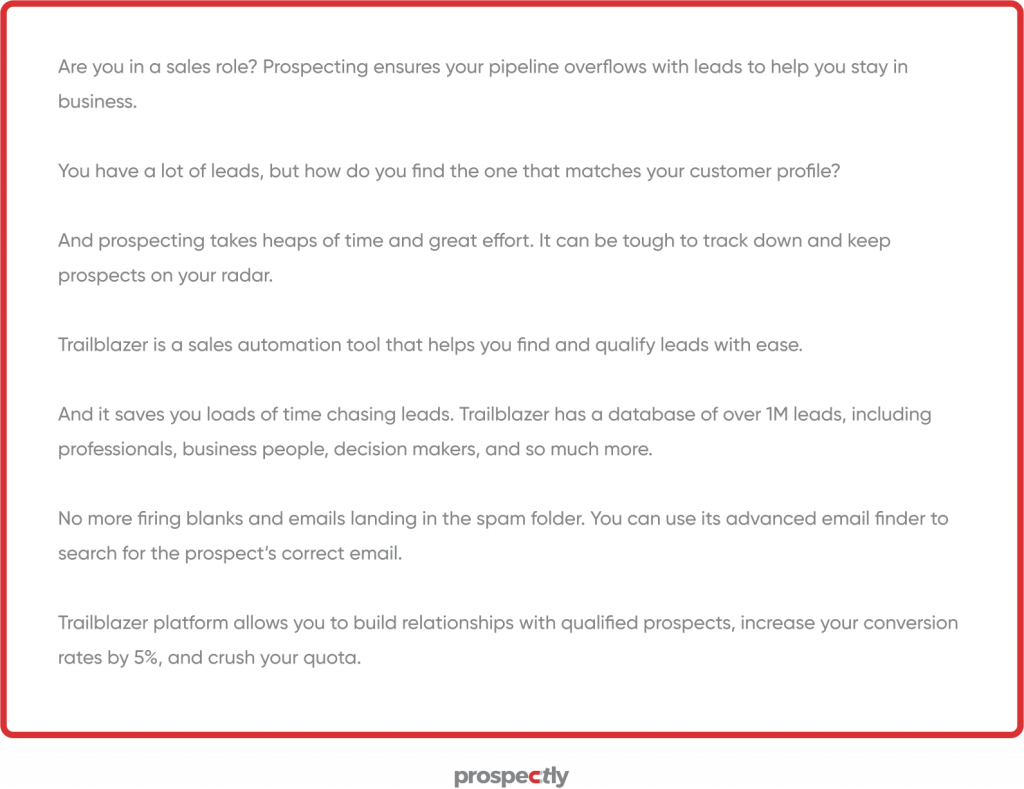
Here are the key takeaways:
- This is a benefit-driven approach blended with solutions, instead of a product-oriented pitch.
- The focus here is not on why your solution is better than the competition. But on how it solves the prospect’s problem.
- In short, solution-based selling is taking a step back and looking at things from your buyer’s perspective.
What does selling the solution look like?
By focusing on solution selling, salespeople position their products as the best solution for their customers. You appeal to your buyers’ desire for a “final answer” and need for certainty by offering the solution.
As a result, solution selling can be an effective way to close more sales by building trust and rapport with customers.
Solution selling vs. products: Which is which?
Solution selling is sometimes confused with product-based or feature-based selling. For example, a product-based seller focuses on the product features and benefits without addressing the pain points.
But solution selling puts the customer’s needs and expectations at the forefront. And then demonstrates how the product benefits can improve the buyer’s life.
Solution selling pros and cons: What’s in it for you?
Let’s discover how the solution selling methodology can benefit your salespeople, and the pitfalls they should note.
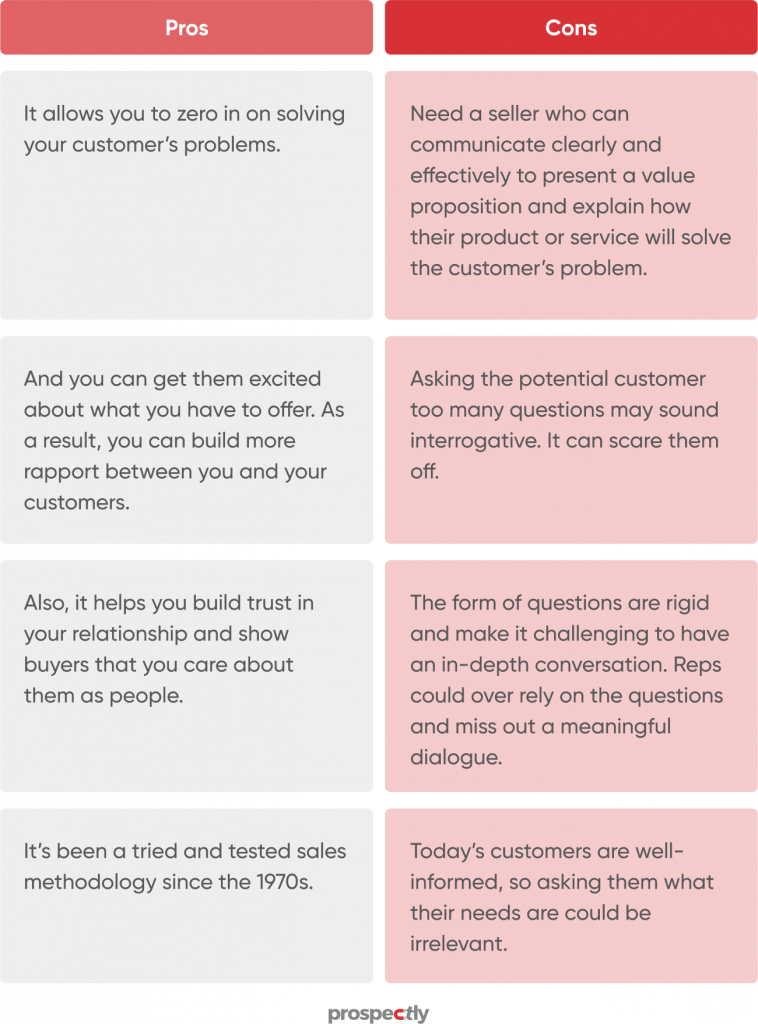
How to kickstart solution-based selling: 6 steps
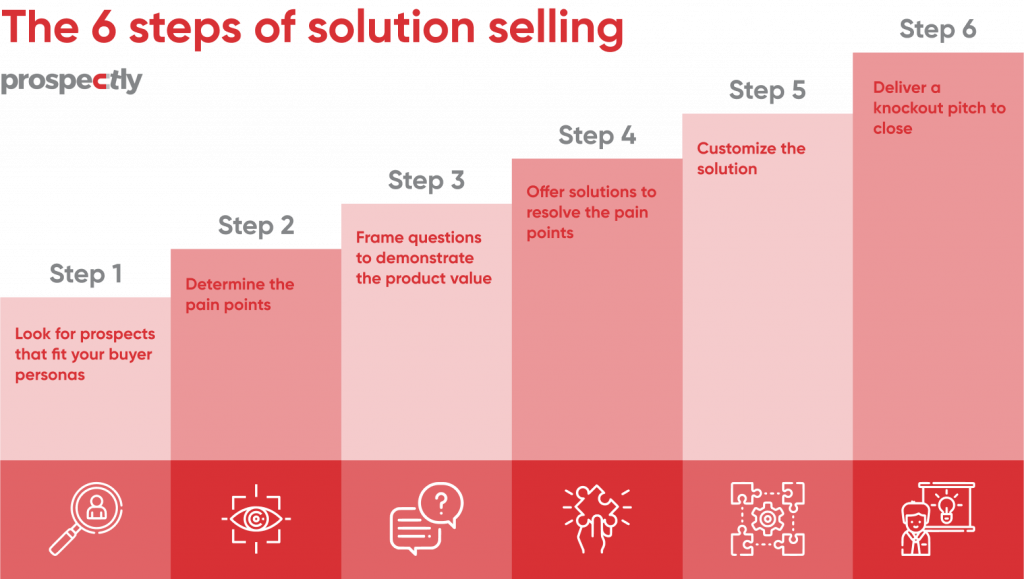
Follow these clear-cut steps to launch the sales method in your business.
Step 1: Look for prospects that fit your buyer personas.
Before anything else, you should have a clear idea of who you want to target.
Who are your ideal potential customers? What are their challenges or needs? What products or services are they currently using? Who are the key decision-makers?
How does their business operate? How do they presently solve their problems? Are there any gaps that your product or service can exploit?
These questions can help you create an ideal buyer persona, so you can deal with the right customers. Also, the more you know them, the easier it’ll be to offer a tailor-made solution.
Step 2: Determine the pain points.
Now that your buyer persona is as clear as day, dig deeper into the pain points. You want to be sure your product or service is the perfect fit.
Let’s use the earlier example of the Trailblazer tool for reps. You could ask yourself these questions concerning leads:
Are sellers wasting plenty of time looking for leads on the wrong platforms? Is the disqualifying process effective? What’s the impact of low-quality leads on revenue? How much sales does the company lose due to pursuing misfits? How can your software solve these challenges?
Your prospecting software will be a perfect fit if the potential buyer has the above problems.
Step 3: Frame questions to demonstrate the product value.
You now understand your customer’s challenges. The next step in solution selling is preparing questions to identify the prospect’s needs, and build a win-win relationship.
You start with a pre-sale strategy to determine if there’s a potential business case for the product. You need to ask open-ended questions to uncover their needs.
They get at the core of the customer’s problem and use a single word or phrase, such as “Why?” or “What’s your biggest challenge?”
The prospect answers with a statement like “I need to overcome XYZ obstacles so I can X.”
It’s a great question because it spells out why the buyer needs your product and their motivation for buying it.
Step 4: Offer solutions to resolve the pain points.
You have unearthed the prospect’s challenges. Next, with laser focus, clarify how your product or service will enhance the buyer’s life. Consider the following matters:
- Are there any time, money, or resource savings they would appreciate?
- Dreams of customers: what do they want?
- Is there anything that your customers wish to achieve, or would be a huge relief for them?
- Can you lower the cost, invest less, reduce risk, or provide better quality for your customers?
Ensure you emphasize the following in your sales presentation:
- Time savings
- Cost savings
- Lowered risks and convenience
- The customer’s long term goals- their bottom line
Demonstrate to the potential buyer that your company’s solution is the best one in fixing their problems. Also, spell out what can happen to their business if they choose or reject your offer.
Step 5: Customize the solution
It’s time to offer a custom solution to suit your customer’s needs. You have now identified your buyer’s challenges and highlighted the benefits of your product. Next, propose a complete solution that satisfies those wants.
Consider their budget. For example, if they’re prepared to pay less than your expectations, you can offer a solution with reduced features. A SaaS B2B can create different packages to cater to different budgets.
See this example from MailChimp.
Step 6: Deliver a knockout pitch to close
The last step in solution selling involves crafting a killer pitch to close the sale. Your presentation should also address sales objections, and show the product as a worthwhile investment.
Closing strategies include emphasizing scarcity, summarizing the product/service benefits, etc.
More solution-based selling questions to up your game
- Could you do anything to get rid of this problem?
- What would you save if you had the solution?
- If this challenge didn’t exist, what could you achieve?
- What is the frequency of this problem?
- Would you change your vendor if a new tool allowed you to achieve 15% more sales? What is your average amount of time spent on Y?
- What’s your budget for Y?
- What amount of time might you save with a solution?
- How would you describe your greatest challenge?
Do solution selling the Mckinsey way: How to avoid failure in solution selling
Solution selling has been around since the 1970s. And a lot of things have changed in technology and consumer preferences and knowledge. A Mckinsey study evaluated companies from across several industries that applied solution selling. This is what Mckinsey recommends to avoid failure.
Respond to customer queries faster
Ensure there is a well-oiled customer support team working alongside your reps. They need to reply to buyers’ questions, and address their needs as soon as sellers have sent in orders.
The team must include specialists from different departments if you’re dealing with highly technical products. Customers will have loads of questions about product use, etc. Your team needs to be on standby to handle those matters.
Hone rep’s individual skills
To make sure that your sellers are up to the task in solution-based selling, sales leaders must focus on training and coaching.
Train your sellers on product/service knowledge, negotiation skills, closing strategies, and handling customer objections.
Related: Turn your sales coaching into a high performing machine
Evaluate how sellers spend their time
Mckinsey discovered that many reps spend more time in non-sale activities, such as postsale requests, admin tasks, etc. It impacted their sales performance.
It’s critical to assess how your salespeople use their time to ensure they maximize selling instead of admin work. One way is to use the correct tools like CRM, sales enablement software, etc.
Understand your customers to innovate
To stay relevant in solution selling, your business needs to upgrade its social listening skills. Listen to what your customers say about what they want, why they’re dissatisfied with the current products, etc.
Analyze and use the info to create groundbreaking products/services if the problems seem to be affecting lots of people.
Reps must emphasize product value in practical terms
“To close deals, reps must be able to translate each solution into value for the customer and profitability for the company throughout the solution’s lifetime.”- McKinsey
Show your buyer how your solution will minimize specific costs, such as labor, time, productivity, etc. This suggests that you need to research your prospect before your scheduled meeting or demo.
Is solution selling still relevant? Yes, here’s why?
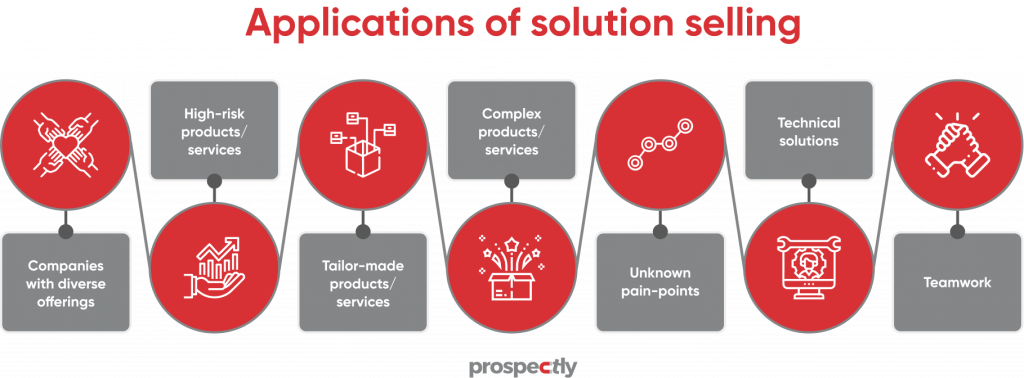
Here are some industries that can benefit from the sales method:
Companies with diverse offerings: Some businesses require solutions they can implement across multiple products, platforms, or production centers. Such companies can capitalize on solution-based selling.
High-risk products/services: Certain solutions may carry a lot of risks for the buyer or even the supplier. Solution selling facilitates risk management and extensive research in such situations.
Tailor-made products/services: Solution selling is ideal for customers who need customized solutions or packages.
Complex products/services: Some solutions are complex. As a result, they need reps who have an excellent grasp of their products and customers’ needs.
Unknown pain points: At first, it may be unclear what solutions specific companies or industries need. That’s because uncovering their needs may take time, so solution selling becomes handy.
Technical solutions: Products/services with lots of technical details require salespeople with tech know-how. In this situation, the solution selling sales methodology is relevant.
Teamwork: Solution-based selling is perfect for businesses that can use cross-functional collaboration to serve their clients.
Solution selling books to sharpen your knowledge
The following books can upgrade your skills to execute solution-based selling.
- Solution Selling: Creating Buyers in Difficult Selling Markets – Michael Bosworth
- The New Solution Selling: The Revolutionary Sales Process That is Changing the Way People Sell– Keith M. Eades
- Secrets of Question-Based Selling: How the Most Powerful Tool in Business Can Double Your Sales Results – Thomas Freese
It’s now your turn to put solution selling to the test
To succeed at solution selling, remember these factors:
- Be ready with a list of questions tailored to the prospect’s needs. Be prepared to answer them.
- Frame your questions to demonstrate how your product/service benefits the potential customer. This will show them how it’ll enhance their life.
- Know your prospect and their goals. When you know what they need, you can find the perfect solution.
- Present the solution with a strong emotional connection. This will help them see why they’ll love it.
Don’t forget to share with your network!
